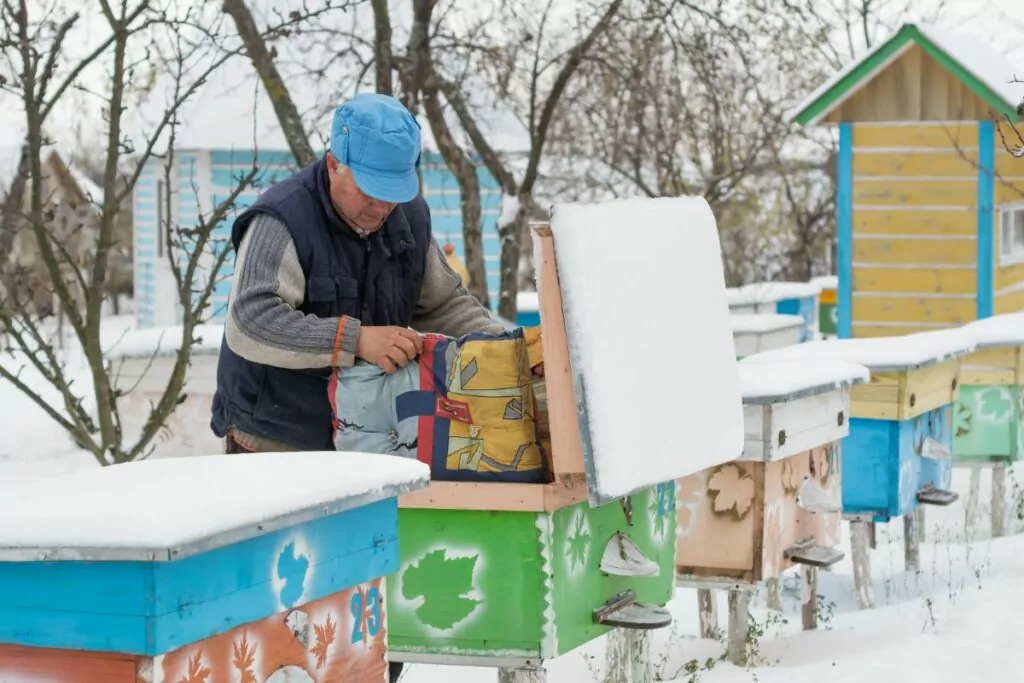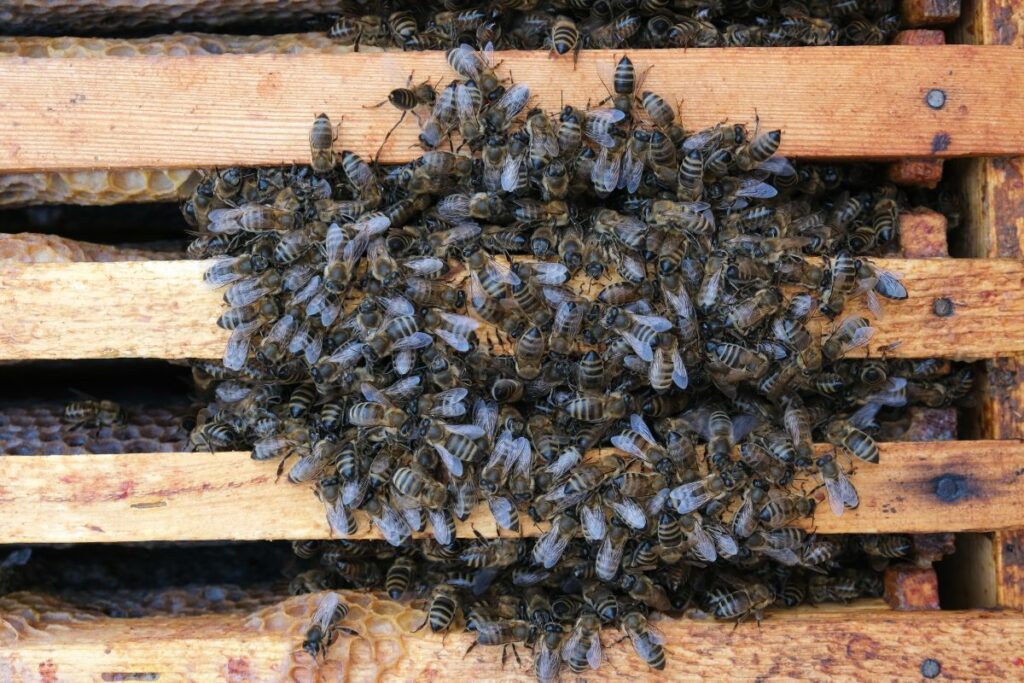Aren’t spring and summer great? The sun is beaming, the flowers are blooming, and the beautiful bees are buzzing — Hooray! And with the bees comes hope for new and more diverse flora all over the nation, as unlike us, these stripy pollinators don’t vacation in summer, they work!

But have you ever wondered where everyone’s favorite fuzzy little insects go when the warm weather gives out, the flowers wilt, and pollen supplies are depleted? One moment the air is literally a-buzz with them, and then POOF! — No more bees.
It’s an intriguing mystery to be sure, one that we’re going to crack right here, right now. Read on to reveal the secrets of the wintering bee.
Some Bees Die In Winter
It pains us to say it, but yes, a lot of bees wind up wintering in bee heaven — *sobs into hands. Most bees survive the winter, but there are a number of reasons why a whole colony may give up the ghost when the chill sets in:
- Not enough food — Bees rely on their honey stores to survive the winter, and if they haven’t been able to produce enough, they will, unfortunately, perish before the warmer weather returns.
Sometimes it’s the warm weather that’s to blame. For instance, if it’s too hot during spring and summer, they may have to utilize all the honey they collect just to get by in the present, leading to a deadly winter.
- Small population — If there aren’t enough bees in the colony, even though they might have honey to spare, they sometimes won’t be able to generate enough warmth to survive the cold.
- Disease/viruses — Should a colony hunker down for the cold seasons with an infection in its midst, it’s very likely that it will spread throughout the entire population, killing them off one by one.
Most Bees Dance Away The Winter Blues
The bees that survive the winter do so by heading into their hive en masse and forming a large bee ball surrounding the queen, right in the middle of the structure.
Once the colony is accounted for and the bee ball is complete, the worker bees get the party started by shaking their behinds, or, well… vibrating is a more accurate term, and it’s not just their behinds they move, but their whole bodies.
This honeybee boogaloo generates an incredible amount of heat considering their size, and thus, they’re able to keep the cold at bay until it recedes into the shifting seasons.
In fact, so effective is this wintry dance, that the temperature around the queen in the crucible of the action often reaches between 90 and 100 °F!
The technical term for these bee balls is actually clusters, and the architecture of clusters comprises two discrete sections, the dense outer mantle, and the more free-flowing, loose inner core.
If the temperature rises, the cluster expands as not quite so much heat is required, and when temperatures drop, the cluster contracts in order to optimize the heat transfer between member bees.
Do Bees Hibernate?

While the behavior discussed above may sound similar to hibernation, it’s technically very different to the hibernation of mammalian species.
Granted, the bees are technically in a torpor-like inactive state, but as they’re constantly hustling in order to generate warmth, and constantly eating to generate energy to stay mobile, it’s not considered hibernation.
The reason they don’t leave the hive isn’t that they’re snoozing or completely inactive; it’s that staying warm is a team effort for bees, and if only a small number leave, the colony suffers.
Having said that, if the temperature rises ever so slightly, you may witness a bee leave and return to the hive once every so often. Why?
Well, much like us humans, bees don’t like to poop (see also: Do Bees Poop?)where they eat, so if at all possible, they’ll head out, take care of business, then return feeling relieved and ready to get shaking again. These solo excursions are known as “cleansing flights”… for obvious reasons.
What Becomes Of Drone Bees Come Winter?
Ah, the drones… on the one hand, they live an awesome workless life of fornication, and on the other, they suffer a horrific death whether they mate or not — It’s a brutal world out there for bees(see also: How Many Bees Are In The World?)!
The only purpose of drones is to mate, and when the good times are over, their abdomens are torn from their body, leaving them to die, thinning the colony in order to make honey supplies last longer.
Those that never get a moment alone on a “mating flight” with the queen of the colony, and thus retain their abdomen, are forcefully evicted by the female worker bees come winter, as the mating season has passed and they have failed to live out their biological imperative.
Allowing them to stay would only put a strain on dwindling resources.And when we say “forcefully evicted”, we mean forcefully.
If you set up shop and observe a hive around the right time of year, you may even catch a glimpse of the worker bees physically dragging drones from the sanctuary of the hive.
They’re the expendables, of the bee world, the suicide squad, if you will, and once they’re out on their own in the big wide world, it’s only a matter of time before they fall — RIP droney boys!
In light of this, drones have the shortest life span of all honeybee regiments, living for only 55 days on average.
Final Thoughts
There you have it — Bees hunker down in their hive come winter, forming a vibrating ball around the queen, essentially creating a living radiator to combat the cold. Sadly, though, a lot of things can go wrong in a colony that will lead to total population death.
It might be that the workers have failed to produce enough honey; it might be that the honey supplies were already low before winter set in; it could be that the population isn’t large enough to effectively warm the hive… the result is always the same.
Thankfully, though, most of our bee friends do survive the cold and live to pollinate another day — Woo!
- Does Bleach Kill Bees? - April 23, 2024
- How Do I Get Rid of Ants Without Harming Bees? - April 16, 2024
- Do Bug Zappers Kill Bees? Completely Explained - April 9, 2024
